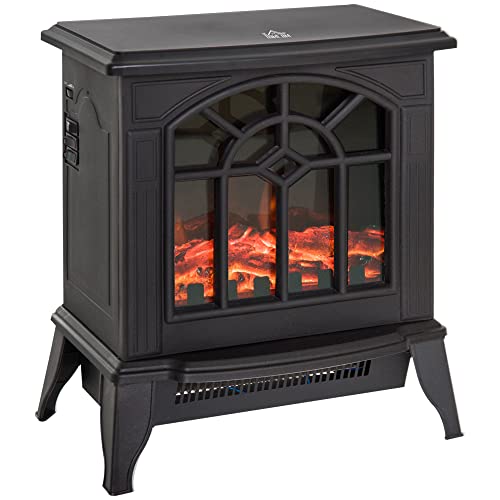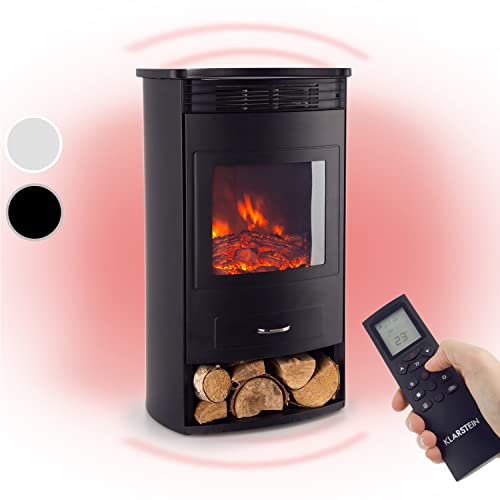
How to Get the Most From a Wood Burner Fireplace
Wood stoves, in contrast to traditional open fireplaces, are engineered to burn wood. This allows them meet stricter emission regulations.

Wood burning stoves emit sparkling yellow flames and soft crackling noises. They also provide an incredibly warm feeling. However, the smoke it creates is contaminated with carbon monoxide as well as toxic air pollutants like formaldehyde, benzene and polycyclic aromatic hydrocarbons.
Efficient
Fireplaces and stoves that are wood-burning are not only beautiful, but also extremely efficient. A top-quality wood burner could have an Ecodesign rating up to 77%. It is crucial to get the most benefit of your log stove, especially with rising energy costs. The good thing is that it's now easier than ever before to do!
The moisture content of wood is one of the main factors that determines the efficiency of a wood-burning stove is. We recommend using only well-seasoned wood that has been dried over a period of at least one year, and in some cases, two years. The more dry the wood and the more efficient it is to burn. This means lesser smoke and fewer harmful emissions.
A wood burning stove also offers the advantage of being an eco-friendly fuel source which is great for the environment. When you purchase locally-sourced wood, you are also helping to promote the active management and conservation of forests. This is great for wildlife.
In terms of maintenance concerned, the primary requirement of a wood burner is to frequently scoop up and dispose of the ash. It's a bit of a hassle however it is worth it to get the maximum heat from each log. If you wait for the ashes 2-3 days to completely cool They can also be used as a non-toxic, green melt of ice. They can be used to polish jewelry and also absorb the odors.
A
marble fireplace with wood burning is a timeless classic. While they're not as popular than gas fireplaces, their appeal and ambiance of a roaring flame cannot be denied. They're perfect for cosying with on cold winter nights and are a perfect way to create a warm and inviting space within your home. Choose a high-quality wood stove and you'll be benefiting for many years to come! Call us today to learn more about how our skilled chimney sweeps can assist you in getting the most out of your stove.
Low Carbon
Wood burners that burn clean and efficiently are among the best ways to save money on logs while keeping your home warm. Additionally, they also aid in local woodland management, a excellent way to help the wildlife that lives in your area.
Wood-burning stoves and
fireplaces wooden produce minimal pollution when they are properly maintained and are used with dry, seasoned and dry firewood. If they aren't maintained properly or use wood that is of poor quality the smoke produced contains fine particles commonly referred to as particulate pollution that can cause irritation to lungs and other body organs. Carbon monoxide, air pollutants that are toxic like formaldehyde and benzene and polycyclic aromatic hydrocarbons are also in the. Inhaling this kind of air pollution could cause lung irritation wheezing, coughing and asthma attacks and may even cause serious health issues like heart disease, cancer, or premature death.
Some people worry that using a wood-burning stove will contribute to climate change, but this is not necessarily true. Wood burning is a carbon neutral energy source. In the course of the life of a tree, it absorbs carbon dioxide, and when it is burnt, the carbon absorbed is released back into the atmosphere.
The wood is produced locally, which reduces the amount pollution that is produced during the transport process. It is important to use hardwoods that have been seasoned and of top quality. They will burn longer and more evenly than softwoods.
modern fireplace, EPA certified wood stoves and heaters (such as those made by Charlton & Jenrick) have considerably lower emissions than earlier stoves. They are certified to meet 2020 EPA standards, which are considerably more strict than earlier emission limits.
All wood burning stoves should be fully vented to the outside of your property to ensure they do not create a build-up of exhaust in your house. By keeping flames above the logs, and ensuring you use dry, seasoned and dry wood, all of our current clean burn and DEFRA exempt stoves are capable of producing very clear exhaust and have particulate levels 60 or more lower than the DEFRA limit.
A wood burning stove with a catalytic converter or a hybrid unit can provide the best low-carbon heating solution. These units re-ignite the gases and particulates that were ignited during the initial combustion in a second stage by mixing them with superheated air. They then funnel the remaining particulates and gasses through a catalytic combustor for a third and final combustion, decreasing emissions to levels well below government standards.
Clean Burn
Cleanburn wood stoves burn fuel at the highest efficiency. This results in minimal emissions of particles into the air when burning wood. The air management system of the stove controls the intake and exhaust of gases, ensuring that the combustion process is conducted in a safe and controlled environment. It also regulates flame height to maximize heat output and minimize emissions.
This means that your chimney and the surrounding area will be much cleaner than older stoves. Particulate matter (also called particle pollution) from wood that is not fully combusted can cause respiratory problems like wheezing and coughing in people and contributes to the development of heart diseases such as stroke, diabetes, and other serious health issues. Wood burning also contributes to poor air quality in cities.
The smoke from poorly combusted wood contains fine particulate matter and dangerous air pollutants, including carbon monoxide, volatile organic compounds, nitrogen oxides, benzene formaldehyde and polycyclic aromatic hydrocarbons. These particles can reach deep into the organs of the lungs and cause discomfort, damage and even death. Airborne dust can also damage surfaces in your home and give them a rough feeling.
It is important to select top quality, seasoned, and dried firewood when using your wood burner White
wall fireplace (
Www.Longisland.Com). Hardwoods like oak beech, ash, and ash are the best choice for heating. Hardwoods have a high density and BTU content and they offer more heat than softwoods.
Check with your local authority to determine whether they have rules about wood burning. These may include nuisance/odor rules and visible emissions, or smoke opacity limits.
It is crucial to keep the glass of a stove with a glass front free of dirt and deposits. You can use a dry cloth or oven cleaner spray to do this. You can also add bicarbonate of soda mixed with a bit of water to the glass.
Regular maintenance of your chimney and stove is also essential. This includes regular chimney cleanings that remove creosote and ensure proper operation of the flue. You should also mark the dates for periodic inspections on your calendar. This will help you prevent costly repairs and extend the life of your wood stove.
Low Maintenance
Many people opt to install wood-burning fireplaces due to the warmth and natural beauty they provide. However, this kind of fire requires a bit of upkeep and maintenance. If not maintained and cleaned regularly the chimney, flue and stove could be potential sources of fires within your home. Fireplaces are also a great source of heat when the power goes out, particularly in winter, when snow storms could cause branches of trees to fall and rip down power lines.
Using a wood burner for heating will reduce your carbon footprint significantly in comparison to other fossil fuel sources such as gas. Modern wood stoves, inserts and fireplaces are built to conform to EPA standards (Environmental Protection Agency) which means that they emit very little emissions. The more seasoned the wood is the more efficient it will be as well which means you'll burn less of it to produce the same amount of heat.
These fireplaces require some maintenance and care, including ensuring they are positioned away from combustible materials and a screen is in place. The air flow can be improved by keeping the grate clean of ash and other debris. This will ensure that the fire is burning longer and your home in good order. It is recommended that your chimney and stove swept at least once a year to avoid creosote accumulation which could create a dangerous fire hazard and obstructions that could hinder ventilation.
It may take some time for a new homeowner to learn to ignite, light and maintain a continuous fire in the
fireplace inserts. But, once you've achieved the art of creating and maintaining the fire in your wood burner, it can be a source of lasting pleasure that will provide warmth and warmth to your home year after year.
Wood burning fireplaces have been around in one form or another for over 500 years. They've gained popularity because of their efficiency, sustainability and the natural warmth of wood. If you're considering the purchase of a new heater, consult with your local certified Regency dealer to learn more about the advantages of a wood stove or an insert for your home.

 How to Get the Most From a Wood Burner Fireplace
How to Get the Most From a Wood Burner Fireplace Wood burning stoves emit sparkling yellow flames and soft crackling noises. They also provide an incredibly warm feeling. However, the smoke it creates is contaminated with carbon monoxide as well as toxic air pollutants like formaldehyde, benzene and polycyclic aromatic hydrocarbons.
Wood burning stoves emit sparkling yellow flames and soft crackling noises. They also provide an incredibly warm feeling. However, the smoke it creates is contaminated with carbon monoxide as well as toxic air pollutants like formaldehyde, benzene and polycyclic aromatic hydrocarbons.